A Glimpse Into the World of Forgotten Dogs
When my supervisor offered me the opportunity to take PETA’s social media team from our sunny Los Angeles digs at the Bob Barker Building to freezing-cold Virginia to help chained “backyard dogs,” my initial reaction was one of intimidation. It’s true that the task of promoting PETA’s work on Facebook and Twitter requires looking at some of the most heartbreaking images known to humanity, but usually there’s a computer screen between us and the horrific abuse that we’re seeing. The idea of witnessing animal suffering in person was something that I wasn’t sure I was ready for.
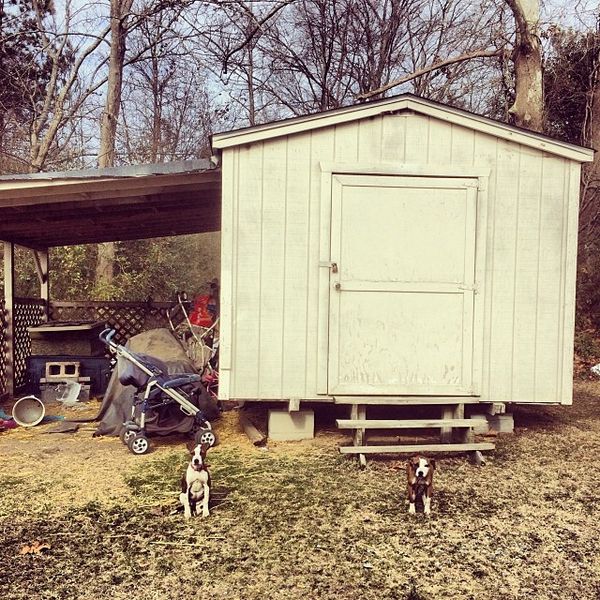
PETA’s fieldworkers do whatever it takes, in whatever weather conditions, to help make life a bit better for neglected and abused dogs, cats, and other animals in the area around PETA’s HQ, the Sam Simon Center, in Norfolk, Virginia. Parts of this area are among the poorest in the country, so PETA’s fieldworkers often deal with animals in horrible conditions. And because it’s still legal in many areas to keep dogs chained outdoors 24/7, PETA staffers have been visiting some of these dogs for years. While the fieldworkers always encourage people to let their animals live indoors and make them a part of the family, they are also pragmatic. The straw that they deliver won’t freeze in the winter, as blankets do, and the doghouses that we provide protect dogs from the bitter cold of winter and the sweltering heat of summer.
I was assigned to ride with Heather, who told me that we’d be spending the day in Halifax County, North Carolina (about two hours southwest of our Norfolk office), and that we had about six or seven cases to work through. It’s hard to put into words what I witnessed on what, for her, was an “average work day,” because we saw so many animals in need. But these are just a few of the cases that struck a chord with me:
- Buster, a 10- or 11-year-old dog, has lived outdoors in a small pen all her life, with virtually no contact with anyone. When we pulled up, she was running and jumping for joy, and as we approached her pen, she threw herself against the fence to get closer to us, even sticking her head through the holes. Her water bucket was completely frozen over. We dismantled the fence, which was so old that it had tree roots growing through it, so that her guardian would have access to her in case of an emergency and also so that he would be able to start walking her, an idea that he seemed receptive to. We gave her a proper doghouse, treats, fresh water, and a leash and bowl, and I showered her with as much love as I possibly could. Given her enthusiasm and love of cuddling, one would never suspect that she’s had so little contact with humans. I will remember her and the joy on her face forever.
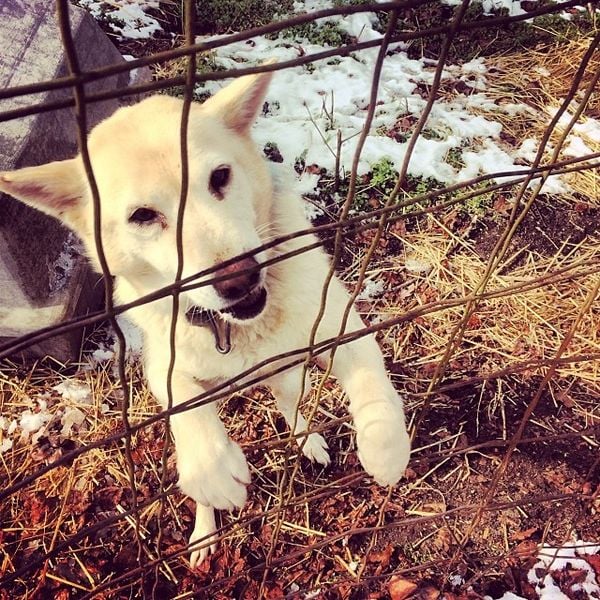

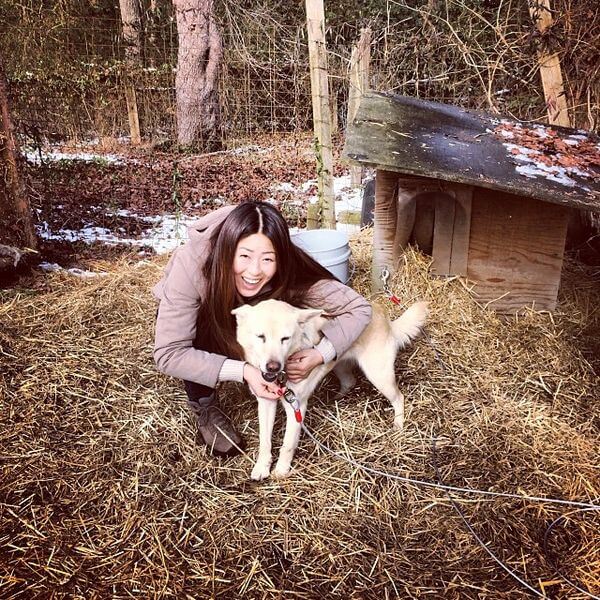
- Across the street from Buster, we found a sweet pit bull who was chained to a doghouse, with her two puppies scampering around her. Their guardians weren’t home. We went over and discovered that the area was strewn with broken glass (most likely because the mother dog had been rummaging in the trash out of boredom). PETA fieldworkers had clearly been there before because there was a bag of straw sitting in the carport that the dogs’ guardians hadn’t bothered to open. The mother dog had been biting at her tail, and it was bloody. All three of them were so undernourished that their ribs were showing. Like sweet Buster, they were severely starved for attention. We dewormed them, picked up the glass, and gave them straw and food. The mother dog was so ravenous that she was unable to focus on anything but filling her own stomach, but the puppies eagerly lapped up my affection along with the treats. Legally, there wasn’t much else we could do—we had to leave them. As I wiped away tears, Heather wrote a note and left a card for the guardians to let them know that we had come by and asking them to contact us for additional assistance. Words can’t describe how frustrated I felt as we pulled away while the puppies watched us with pleading eyes. That image will stay with me for the rest of my life. I’m so thankful that PETA’s fieldworkers will be back to check on them regularly.
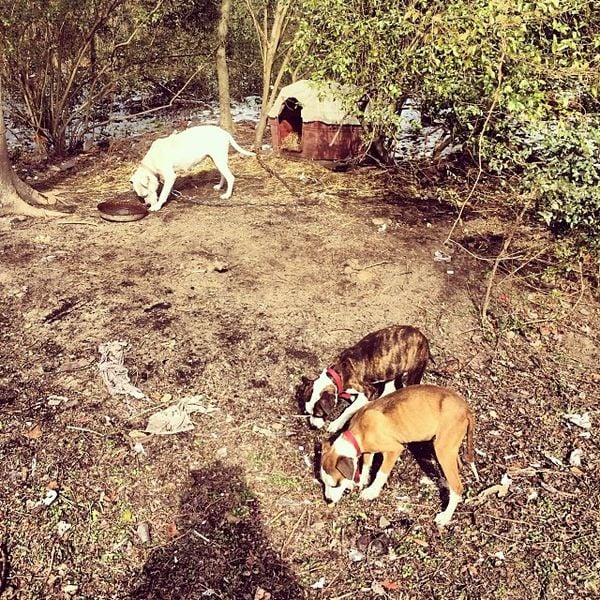
- This is Boy Boy, who had nothing but massive, slobbery love for us. He lives tied up to his PETA doghouse in the freezing North Carolina winter cold and expends his pent-up energy by running back and forth and around in circles. We gave him fresh straw to keep him warm, treats, lots of hugs, and a leash for his guardian, who, after some discussion, agreed to start walking him around the neighborhood. This particular area seemed to know the PETA van very well. Many people approached us, asking for help with this dog or that cat.
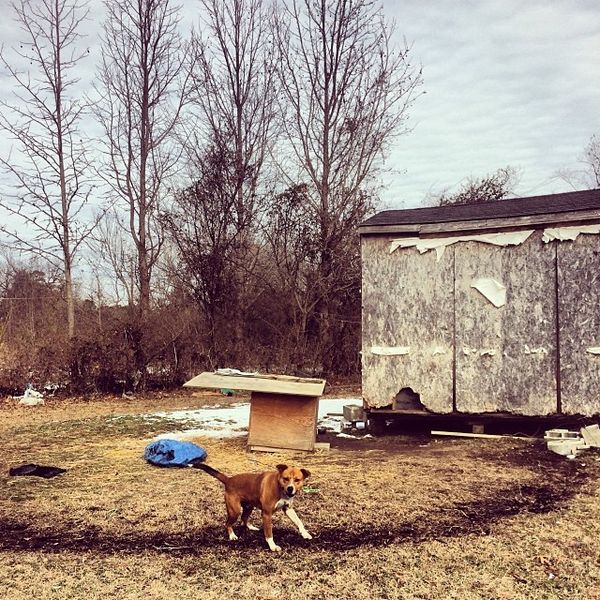
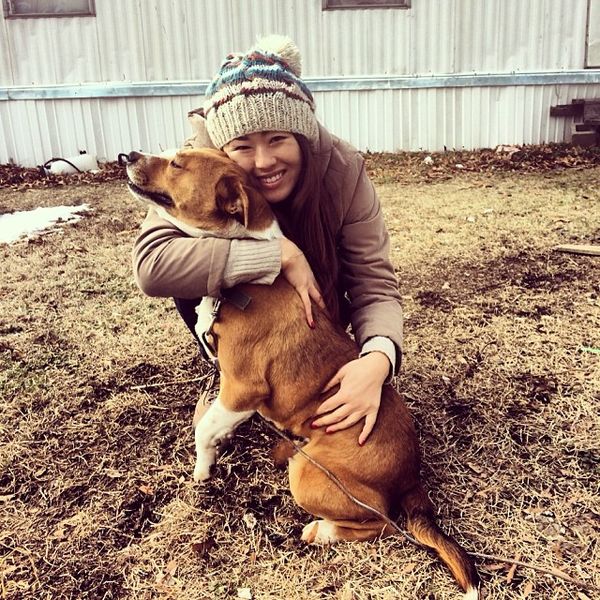
- Although this sweet boy’s name is Vicious, he is anything but. We gave him fresh water, straw, and lots of treats, and we got him off his heavy chain and gave him a 15-foot lightweight tie-out instead. We encouraged his guardian, who also had another pit bull tied up on the other side of the yard, to check the dogs’ water frequently, and we provided other tips on how to care for them as well. I wanted to take this boy home with me, and I still think about him often. I’m so relieved that PETA will continue to check on him and provide him with whatever comfort we can.
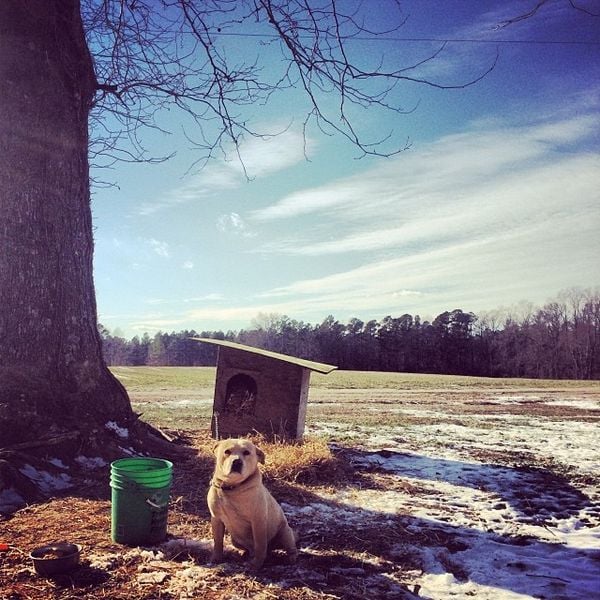
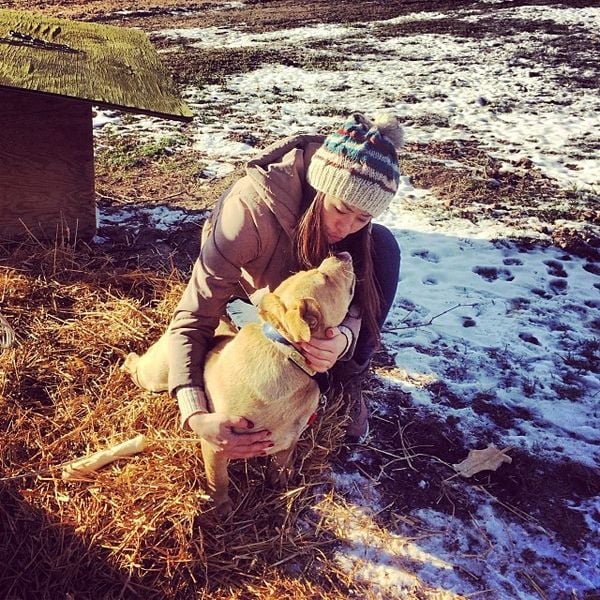
One of the most heartbreaking revelations that we had on this trip, as with so many issues that PETA works on, was just how many animals suffer like this. It’s sad enough to witness one case, but there seems to be an unending stream of them. And then I also realize that I’ve only gotten a tiny glimpse into the world of a neglected “outside dog” during my two days in the field, whereas they spend all year long living in these conditions, and it prompts me to ask, “What more can I do?”
If YOU would like to do something, you can share this video about all the ways in which PETA’s Community Animal Project helps animals:
And you can donate to PETA’s doghouse project in order to give a lonely “backyard dog” a doghouse today.

